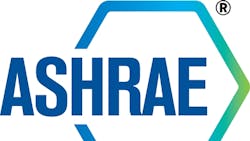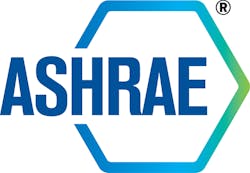Preliminary Energy Savings Announced for 2016 ASHRAE/IES 90.1 Standard
More than 30 percent energy savings can be achieved using the 2016 version of ANSI/ASHRAE/IES 90.1, Energy Standard for Buildings Except Low-Rise Residential Buildings, analysis recently conducted by Pacific Northwest National Laboratory (PNNL) in support of the U.S. Department of Energy (DOE) Building Energy Codes Program shows.
PNNL conducted the energy-savings analysis using the 2004 version of the standard as a baseline. The results are considered preliminary and are expected to be deemed final in October 2017, when the DOE publishes its final determination.
Regarding whole-building energy consumption, PNNL’s analysis shows national aggregated site energy savings of 34.1 percent and energy-cost savings of 34.2 percent compared with the 2004 standard.
“For more than 40 years, ASHRAE and IES members have strived to build upon the energy-savings measures in each update of Standard 90.1, most recently released in its 10th edition,” Tim Wentz, PE, FASHRAE, HBDP, ASHRAE president, said. “Each year, the challenge grows as technology becomes more efficient. That we continue to build upon the savings speaks to the ability of our industry to adapt and transform as those technologies change and more advanced technologies become more cost-effective.”
“The Illuminating Engineering Society has actively engaged with ASHRAE since 1975, providing technical support and co-developing standards,” Mark Lien, IES industry-relations manager and liaison to the Standard 90.1 committee, said. “Compliance with recommended light levels is verified using a database of luminaires. These baseline products were reevaluated and updated to reflect the market shift toward higher-efficiency lighting sources.”
On a nationally aggregated level, building-type energy savings range from 11.9 percent (fast-food restaurants) to 48.6 percent (schools), while energy-cost savings range from 15.3 percent (large offices) to 49.8 percent (schools). These figures include energy use and cost from whole-building energy consumption, including plug and process loads.
Sixteen building prototypes were modeled in 17 climate locations as part of the analysis.
The energy-reduction calculation was achieved through more than 120 addenda related to changes to requirements. The changes included:
- Updated controls for emergency lighting.
- Improved window U-factor and solar-heat-gain coefficient.
- Improved coiling-door air-leakage requirements.
- Updated parking-lot occupancy controls.
- Updated opaque-door U-factor.
- Established minimum chilled-water-system coil-selection delta-T.
- Updated transformer-efficiency requirements.
- Added domestic-hot-water-branch insulation.
- Reduced heat-rejection variable-frequency-drive (VFD) threshold.
- Raised minimum exhaust-air energy-recovery threshold.
- Reduced exterior- and interior-lighting allowances.
- Updated fenestration orientation.
- Inclusion of service factor in heat-rejection VFD threshold.
- Updated motor efficiencies.
- Improved hotel/motel guestroom control.
- Reduced pumping VFD threshold.
- Required high-efficiency dwelling-unit lighting.
- Reduced retail-lighting adder.
- Elimination of the computer-room-economizer threshold.
- Removal of the ventilation-optimization exception for energy-recovery ventilators.
- Updated transfer-air requirements.
- Updated climate zones.

